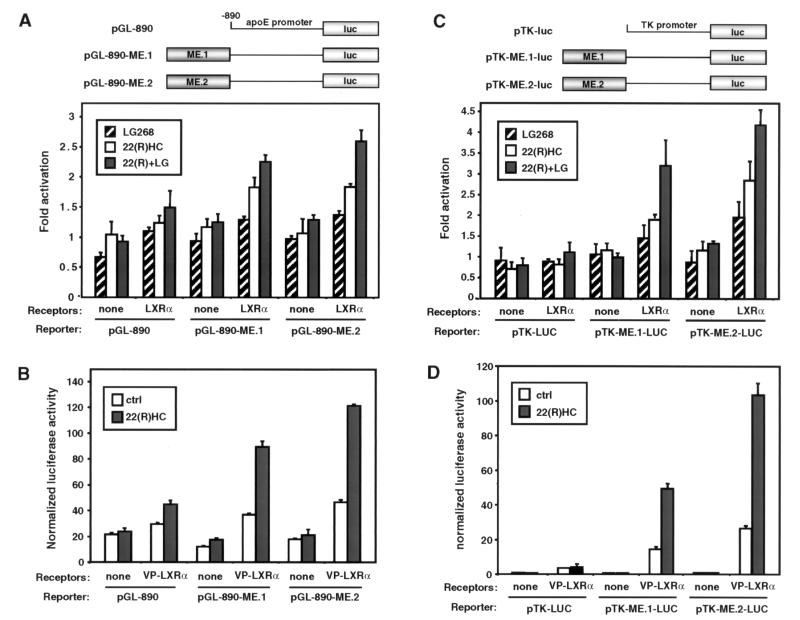Figure 4.
The LXR/RXR heterodimer activates the apoE ME.1 and ME.2 enhancers. (A) LXRα/RXRα activates the −890-bp apoE proximal promoter fused to either ME.1 or ME.2. HepG2 cells were transfected with pGL-890, pGL-890-ME.1, or pGL-890-ME.2 with or without CMX-mLXRα and CMX-RXRα and CMV-β-galactosidase. After transfection, cells were incubated for 24 h in MEM supplemented with 10% (vol/vol) LPDS and 22(R)HC (5.0 μg/ml), LG268 (50 nM), or vehicle control. Luciferase activity was normalized for transfection efficiency with the use of β-galactosidase activity. The data are expressed as fold activation in the presence of the indicated ligand versus in the absence of ligand and represent the average of triplicate experiments. (B) VP16-LXRα activates the apoE proximal promoter fused to either ME.1 or ME.2. Transient transfections were performed by using CMX-VP16-LXRα and CMX-RXRα as indicated. The results are shown as normalized luciferase units. (C) ME.1 and ME.2 function as LXRα/RXR-responsive enhancers when fused to a heterologous promoter. Transfections were performed with the use of pTK-Luc, pTK-ME.1-Luc, or pTK-ME.2-Luc reporters. (D) ME.1 and ME.2 are activated by VP16-LXRα. Transfections were performed with the use of pTK-Luc, pTK-ME.1-Luc, or pTK-ME.2-Luc along with CMX-VP16-LXRα and CMX-RXRα.

